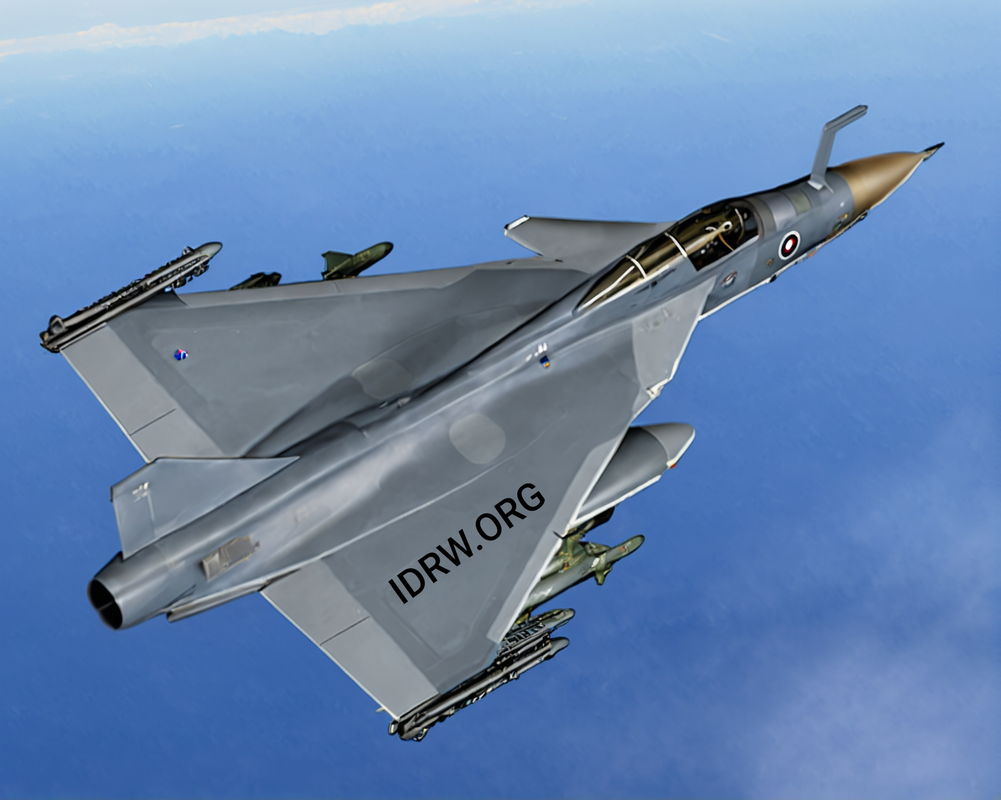SOURCE: RAUNAK KUNDE / NEWS BEAT / IDRW.ORG


The inclusion of canards on the Tejas MkII offers multiple aerodynamic benefits, particularly in enhancing the aircraft’s lift and improving its performance during slow-speed manoeuvres, such as landings and takeoffs. One of the primary functions of canards is to generate additional lift at slower speeds, making them crucial for operations like short takeoff and landing (STOL), which are essential for carrier operations or limited runway availability.
During landings, aircraft are required to operate at lower speeds, and maintaining lift becomes critical. The canards on the Tejas MkII, positioned in a close-coupled configuration just behind the cockpit and slightly ahead of the wings, play a crucial role here. Being close-coupled means the canards interact more efficiently with the airflow over the wings, improving the overall wing-canard interaction. This leads to a significant increase in the lift generated by the wings.
By stabilizing the wing’s leading-edge vortices, especially at medium to high angles of attack (AoA), the canards help in delaying vortex breakdown, a phenomenon that can cause a sudden loss of lift. This extended control over the lift generated by the wing ensures smoother and safer landings by allowing the aircraft to sustain slower speeds without risking a stall.
The synergy between the canards and the wind rudders is also critical for STOL capabilities. As the canards provide increased lift at slower speeds, they also generate a slight aerodynamic downforce, which can be used to stabilize the aircraft during landing. This downforce works in conjunction with the braking systems, enhancing their effectiveness and allowing for shorter landing distances.
Additionally, the lift generated by the canards reduces the burden on the main wings during landing and takeoff, allowing for more efficient use of control surfaces like the rudders. The combination of these elements optimizes the Tejas MkII’s manoeuvrability and responsiveness during critical flight phases.
Another benefit of the close-coupled canards is their ability to positively affect wing aerodynamics during medium to high AoA manoeuvres. The canards’ interaction with the airflow over the wings prevents premature vortex breakdown, ensuring that the aircraft maintains control even in these demanding conditions. This capability is essential not just for landings, but also for combat scenarios where agility and high AoA performance are crucial.
The canards on the Tejas MkII contribute significantly to its overall aerodynamic efficiency, especially during slow-speed operations like landings and takeoffs. Their position and configuration optimize lift generation and ensure improved control at high angles of attack. This makes them a valuable feature in enhancing the aircraft’s STOL capabilities, as well as its overall manoeuvrability and combat readiness.
NOTE : Article cannot be reproduced without written permission of idrw.org in any form even for YouTube Videos to avoid Copy right strikes. Websites doing illegal reproductions will get DMCA and Legal Notices.